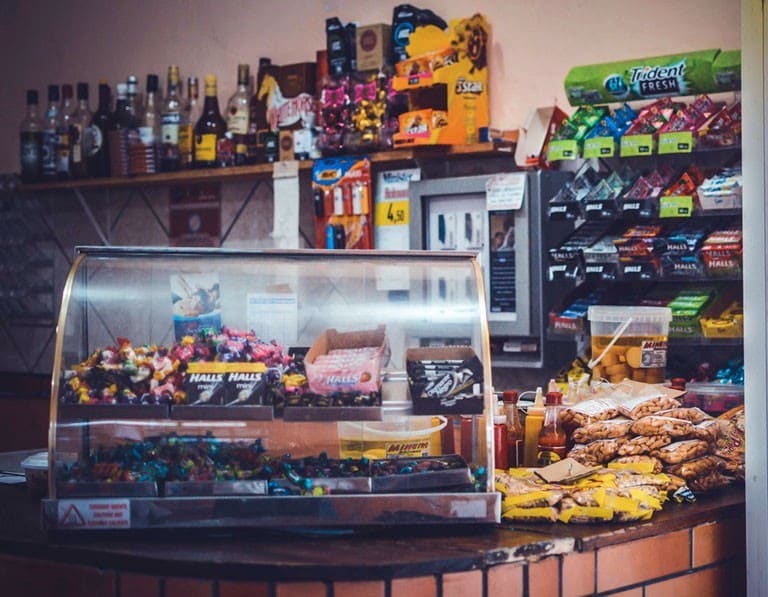The Future of Food: How We Can Expect Our Favorite Products To Change
Scooby-Doo’s greatest mystery yet came in early 2016, when General Mills’ Scooby-Doo fruit snacks hit stores with a new formula, swapping out the beloved opaque blue gummy piece for a translucent “impostor,” Caleb Cejka tells MiLLENNiAL. Cejka, a nursing student at the University of New Hampshire, signed an online petition imploring General Mills to bring back the fan favorite, which featured a softer consistency.
To the dismay of the over 200 people who’ve endorsed the petition, the chances of the classic blue piece returning are slim, as the change coincided with the removal of artificial colors from General Mills’ candy lineup. The move does make sense from a business perspective, though. For the average consumer, healthfulness is the third best metric in deciding whether to buy a food or beverage (taste and price are first and second, respectively), with 64 percent of U.S. adults factoring it into their decision, up six percent since 2006, according to a 2016 survey by The International Food Information Council.
After learning the reasons behind Scooby’s shakeup, Cejka said, “It’s not about being healthy when I’m eating Scooby-Doo snacks. I know they’re not healthy for me. If I want to be healthy, I go eat an apple.” Well, with millennials’ consumer demands shifting to favor natural ingredients (primarily in women and college grads, according to the earlier study), shoppers will have to get used to their favorite products changing in the near future.
Based on millennial shopping trends, here are three changes that will affect the future of food in the next few years:
Fewer Artificial Colors
The prevalence of artificial colorings in our food has increased fivefold since 1955, with consumers upping their daily intakes from 12 mg per person, to nearly 67 mg, according to a 2016 report by The Center for Science in the Public Interest. Now, as veritable claims against the safety of certain dyes (particularly Red 40, Yellow 5, and Yellow 6) are stacking up, with evidence that they may lead to hyperactivity in some children, consumers are growing wary of their inclusion.
In addition to General Mills, food juggernauts like Dunkin’ Brands (the holdings company for Dunkin’ Donuts and Baskin-Robbins), and Mars (maker of M&M’s) are making strides in removing such colorings, while Kraft already famously shifted to natural yellow colors in their Mac & Cheese dinners, a change that went mostly unnoticed for months before it was announced in early 2016.
Jessica Almy, the deputy director of nutrition policy at The Center for Science in the Public Interest, says we can expect to see less blue in our food, too. “Before the ‘80s, people didn’t eat foods that were dyed blue. It’s one of the hardest dyes to find natural sources for, because it doesn’t occur much in nature, so we’ll stop seeing them if millennials continue to champion natural flavors and colorings,” Almy said.
Trix Cereal already removed their blue pieces in early 2016, corresponding with General Mills’ renewed focus on natural ingredients. Eliminating artificial colors won’t be without consequence, though.
Kantha Shelke, food scientist and pioneer of the forever-gooey marshmallow and caramel swirls in Ben & Jerry’s Phish Food ice cream, said, “Preservatives are added to foods to keep them from changing color, but people aren’t happy with preservatives either. To eliminate both preservatives and artificial colors, companies have started using antiseptic processing, and selling things like boxed juices. You don’t have to add a color because most people drink it out of the box, and so they never see the color. But if somebody poured it out, they would go, ‘Oh my god, this apple juice is dark brown,’ and that would turn people off.”
Shelke also warns that natural ingredients aren’t necessarily healthier than artificial alternatives, and in fact, may present an even greater hazard to consumers. “[Natural] dyes have mostly just been tested for efficacy. In a synthetic color, you are only dealing with one molecule. One pure substance. We know what we are getting, and we know what the effect is. With natural, we are getting a mixture, and when complications arise, we don’t know which one of those molecules could be the offending agent.”
Healthier Checkout Lines
Another area where we’ll soon see big changes is in our local grocery store checkout aisle. It’s the part of any store most likely to prompt impulse buys, so junk food companies pay well for prime placement. But increasingly, both stores and local health advocates have been asking for healthier choices.
“A lot of times, it’s parents shopping with kids, who just don’t want to have a battle of the wills in the checkout line. Kids want to grab something, and parents want to feel good about it. Instead of picking up a candy bar, it will be nice to have a healthy selection of grab-and-go snacks, like bananas or granola. Things under 200 calories,” said Almy. Because the checkout aisle creates a captive audience of shoppers, and that space is so valuable to the largest brands, a ubiquitous switch to healthy checkout lines will take sustained pressure from millennials. Much progress has been made in the last year, though.
The healthy checkout movement first made headways in local stores, but the practice is now catching on with larger companies, the first being the discount grocery chain, Aldi, which has committed to making the change by the end of this year. CVS Pharmacy also promised to phase out candy bars in their checkout area, in line with their standing as a health and pharmaceutical company, and their 2014 divorce with the tobacco industry. Target could be next, as they’re currently testing the concept in select stores.
Shorter Shelf Life
The most effecting change we can expect to see in the next decade is a shorter shelf life for our food. This is due to increasing numbers of health-conscious shoppers. Many millennials don’t realize that advocating for stricter measures on the food industry, like the removal of preservatives and artificial colorings, will fundamentally alter the way people buy and eat food in the future, in potentially onerous ways too.
“When you look at market trends, people talk about how millennials are going to change how people eat because they want to have foods that not only taste good, but that are also good for the body. But there’s a flip side to that. And that’s that these very same millennials who have such tall orders, also come with severe limitations … they can’t have both preservative-free foods and convenience,” said Shelke.
An example of shortening shelf lives can even be found in crackers, a food widely considered non-perishable. When big cracker companies were asked by the FDA in 2013 to remove partially hydrogenated oils (responsible for trans fats) from their products, the result was a cracker that lacked the familiar flaky texture, and tasted less buttery. The shelf life was also considerably shortened, from nearly two years, to maybe only eight to 10 weeks.
“Today’s Twinkie, made for the millennial’s taste and expectation, would last maybe a few hours. Because it wouldn’t have enough stuff in it to hold itself up, to keep it nice and plump looking. You would have to get a Twinkie-like product at Krispy Kreme, for instance, made every few hours or every couple of days. But today if you find one in the back of your cupboard, you can be like ‘Hey, it’s a Twinkie. I can still eat that,’” said Shelke.
When you remove the ingredients that help our food last so long on the shelf, it’s bound to affect the frequency at which we must return to the store for more. It’s a circle back to how our great grandparents used to shop, where on the way home, they would pick up bread, and some cheese, and all of their fruits and vegetables for the next day or two. Such changes may lead to a decline in the prevalence of bulk-packaged goods at stores like Costco, and greater food waste than ever before, with food expiring before it’s had a chance to be consumed.
“These advancements are going to change our behaviors, which works well for those who work in urban areas and cross the store every day on their way home. But for others, it could be a very difficult thing,” said Shelke.









